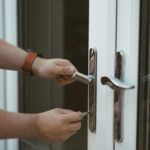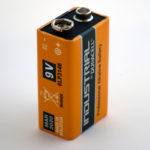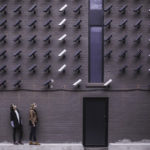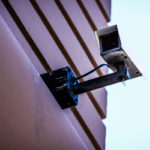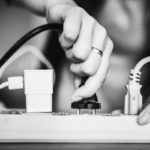Safeguard Your Property
Spring is almost here! With warmer weather on the horizon, many of us may have vacations or weekend getaways planned. Before you leave your house unattended, make sure you’re doing your best to keep your home secure. Here are some helpful home security tips to safeguard your home and property.
Maintain Landscape
Your landscape can be an asset or a weakness to your home security, depending on how you utilize it. To protect your property, you want to limit the potential hiding places that your shrubbery can provide. Consider planting thorny bushes under your windows and be sure to keep them trimmed. You may also want to install motion-activated lights along your landscape to further discourage intruders.
Deter Porch Pirates
While online shopping is convenient, it leaves you susceptible to porch pirates. If you’re having packages delivered to your doorstep, work with the delivery companies to improve security. You can request a text when a delivery is made, require a signature upon delivery, or ask for packages to be left in a less prominent location. Another way to deter package theft is to install security cameras at your front door and around your home to monitor activity.
Hide Valuables
You don’t want anyone passing by your street to be able to see all of your valuables. Instead, arrange your furnishings in a way that they are less visible from the street-side window. Also, keep your garage openers and car keys out of sight from any window. Store these in a cabinet or drawer to keep them hidden.
Reinforce Entry Points
You want to be sure that any point of entry, whether window or door, has the proper protection. Exterior doors should be metal or solid wood and at least 1 ¾ inches thick. Protect your windows with locks or burglar-resistant glass, and reinforce sliding doors with a metal bar. A security alarm can also be beneficial by alerting you when a door or window opens as well as alerting authorities when your system is breached.
Practice Safe Behaviors
Personal habits can play an important role in your home security. Make it a habit to lock your doors and windows and arm the security alarm system whenever you leave. If you’ll be gone for more than a few days or on an extended vacation, you should make it look as if your home is occupied. Leave blinds as they would be usually, plan to defer your mail and other deliveries, and use light timers and smart home devices in different areas of your home. Bonus tip: If you are leaving your keys with a parking attendant, remove your house keys – tech-savvy thieves can duplicate your house keys by simply taking a picture of it.
Share your own home security tips with us and your peers on Facebook, Twitter, LinkedIn, and Pinterest. Browse our wide selection of CCTV security cameras, video surveillance systems and more at SecurityCamExpert.com or call 888-203-6294 today!
Choosing The Best Battery-Powered Wireless Security Cameras
When it comes to security cameras, wireless seems to be the easiest and most convenient option. While some wireless security cameras are not always completely wire-free (most still need to be connected to a power source), battery-powered wireless security cameras are making it much easier to build a completely wireless security system. Here’s what you should look for when it comes to battery-powered wireless security cameras.
- High Definition & Clear Quality
This is a must for any security camera, regardless of the type. Consider what you want to monitor and look for specifications and features that will satisfy your requirements. - Night Vision
Whether indoors or outdoors, if you want your surveillance around the clock, look for a battery-powered wireless camera that provides quality night vision. With these cameras, you should know that there are two types of night vision functions: infrared and starlight.Infrared is the most common and allows cameras to capture a clear vision in darkness thanks to IR LEDs built in around the camera lens. Starlight night vision has yet to gain popularity, but makes the most out of natural light to provide a crisper image than infrared.
- Wireless Capability, Wi-Fi Range, & Internet
Because battery-powered wireless security cameras are not tied down by a power source, you must really take the internet connection and Wi-Fi range into consideration when choosing locations. If you place your cameras in areas where there is spotty connection, your footage and overall security system could be compromised. Also, you must consider how many cameras you will be installing and whether or not your internet connection can handle it. - Durability
This is especially important if you will be installing your cameras outdoors. You want to choose security cameras that are strong and durable to withstand harsh weather conditions as well as normal wear and tear over time. For outdoor cameras, look for IP66 or IP67 weatherproofing casing as these ratings provide effective protection. IP stands for Ingress Protection, and this rating is the rate of effectiveness of the enclosure of the camera against dust and water. The numbers rate the protection against dust and dirt (first) and the protection against water and moisture (second) – the higher the number, the better the protection. - Battery Life
Fairly obvious, but battery life should be taken into consideration because without the battery, you have no functioning camera. Most of the cameras on the market today boast 6 months to 1 year of battery life. And most cameras deliver just that, while others do not. Be sure to pay attention to reviews and specs to ensure that you are getting what you pay for. But also, it is important to have backup batteries on standby.
What else do you look for in battery-powered security cameras? Share with us on Facebook, Twitter, LinkedIn, and Pinterest.
Find a great selection of security cameras, CCTV surveillance packages, and more when you visit SecurityCamExpert.com. Call 888-203-6294 to request a free quote or schedule a site survey today!
Restaurant Security: Night Vision Cameras
Night vision cameras offer a bit more than standard security cameras. The ability to see in low light to near darkness enables surveillance around the clock. While you may understand how this can help you feel safer at home, many businesses can also take advantage of these benefits. Here are some of the ways night vision cameras can be a great asset for restaurants.
- Vision In Darkness
Aside from keeping an eye on the premises overnight, night vision cameras can do their duty during late night business hours. If customers are staying late, it can help make the closing staff feel safer. - Easy To Install & Use
Most night vision cameras are fairly straightforward with their design, some being plug-and-play, making them easy to install and use. - Central Monitoring
Depending on your system, you should have access to any camera feed at any location at all times. If your system permits, this may even be accessible remotely via your smart device or a laptop. - Transferrable Feed
Your recordings can immediately transferred to disk for long term storage. This backup allows you to review past video or share footage promptly should authorities require video evidence of an incident. - Prevent Theft
The simple presence of a security camera can deter burglars from acting. However, in a restaurant setting, these things can easily be overlooked. With surveillance cameras, you may be able to improve inventory control and prevent employee theft. - Prevent Over-Pouring
Along the same lines, if you have a bar in your restaurant, you can keep an eye on your bartenders. Over-pouring is way to lure customers to leave larger tips, but can leave you at a loss. If you come across this issue, you can refer to your footage and correct the problem. - Reduce Violence
Whether among customer, employees, or both, security cameras can help to reduce violence or provide helpful evidence when a problem arises.Night vision cameras can also make your employees feel safe, as mentioned. Employees are happier with employers who show that they care about their safety and well-being. - Boost Productivity
Security cameras in the workplace can alleviate management from the task of security as well as motivate employees and keep everyone on task.
For a wide selection of night vision cameras, surveillance system packages, and more, please visit SecurityCamExpert.com or call 888-203-6294. You can also connect with us on Facebook, Google+, Twitter, LinkedIn, and Pinterest.
Security Cameras: Do’s & Don’ts
Security cameras help to protect homes, businesses and various properties from burglaries, vandalism and more. Unfortunately, if they are not installed properly, they can do more harm than good. Before you invest and install a video surveillance system on your property, review these security camera do’s and don’ts.
DO:
- Place the camera where the roof or ceiling meets the wall.
This spot naturally shields the camera from the elements, and it can usually give you the widest angle of viewing. - Protect your cameras from weather, tampering, and vandalism.
Depending on your security cameras location, you may need to invest in a weatherproof casing to shield it from environmental conditions. Also, be sure to mount your cameras out of reach and with a protective plate to prevent criminals from tampering, disabling, or damaging your equipment. - Securely mount your surveillance cameras.
Be sure that your cameras don’t shake or wiggle if walking or other movement sends vibrations to the wall. This instability could distort the images that your camera is transmitting and could potentially cause damage to your cameras. You may need additional mounting brackets or equipment to ensure your cameras are securely mounted. - Place cameras in heavily-trafficked or shrub-heavy locations.
Because bushes provide cover for intruders, having a camera monitor these potential hiding spots will improve your surveillance. You also want to have eyes on areas with heavy traffic such as walkways or gates. - Set your base unit in your attic.
This is often the most convenient spot for all of your cameras’ wiring to originate from. It also minimizes the need to string cables up and down walls if they can be run on the insides of your eaves under your roofline.
DON’T:
- Just install a camera in an area that won’t be well-lit at night.
If you want surveillance around the clock, be sure that your security cameras have night vision or an infrared setting or lens that works in low light. For outdoor cameras, pair your cameras with exterior lighting with motions sensors if possible. - Attach a camera to a gutter.
This is always a bad idea. Despite being high up and out of reach, the camera is completely exposed to the weather and its weight will put undue stress on your guttering system. - Limit your cameras to just your front door.
You should be monitoring all areas where criminals can potentially gain access. Install surveillance cameras near your back doors, side entrances, and sliding glass entryways. You may want to consider a security camera at the top of your basement stairs in case someone gains access to your basement. - Place a camera right above a basement window.
This location leaves your camera within reach to be disabled or vandalized. Instead, mount a camera under the eaves or even a second-story roofline and direct the lens toward the basement window. - Assume wireless means “completely wireless.”
This is not always the case. Even if your surveillance system operates using wireless signals, each camera and your base unit will still need to be plugged into a power source.
Share your own tips with us and your peers on Facebook, Google+, Twitter, LinkedIn, and Pinterest.
Your security is our priority! If you need help choosing the best security cameras for you, feel free to browse our selection online at SecurityCamExpert.com or call 888-203-6294 to speak with a representative directly.
Mounting Outdoor Security Cameras
Outdoor security cameras aid in your first line of defense against criminals. The presence of outdoor security cameras can deter burglars from targeting you, or they can provide key evidence should an incident occur. Thus, the installation and mounting of your outdoor security cameras play an important role in the success of your surveillance system overall.
Height
Whether for home or business use, the height of your camera will determine what you can capture and the quality of the images. In a business setting, the camera should be able to view the surrounding area while still adequately capturing the faces of incoming customers and those around the front door. Thus, a security camera mounted at least 10 feet high should properly capture the faces and body types of individuals. For homes, you should mount a camera at least 3 feet above your front door and another at least 10-20 feet up to capture vehicles that enter and exit your driveway.
Location
If your cameras are not in the right location, they won’t be able to record crucial footage. You want your security cameras to cover all the main entrances to your business or home, as well as any potential weak spots (ex. first floor windows). For businesses, you also want to monitor your parking lot. Surveillance cameras in parking lots should be in a location that allows them a clear view of customers’ vehicles. And as mentioned, you should have a home security camera devoted to monitoring your driveway.
Visibility
Surveillance camera laws can vary from state-to-state, however, hidden cameras in private places, such as bathrooms, changing rooms, or locker rooms, are forbidden in all states. Since outdoor security cameras are not located in private places, they can be hidden to some extent. But again, the visibility of security cameras alone can play a role in discouraging potential burglars from striking. If you decide on hiding your outdoor cameras, be sure to place a sign on your property informing guests and visitors that they are under surveillance.
How have outdoor security cameras helped keep you safe? Want to share your own tips? Connect with us on Facebook, Google+, Twitter, LinkedIn, and Pinterest.
Browse our selection of outdoor and indoor security cameras, along with PTZ cameras, network IP cameras, surveillance system packages, and much more at SecurityCamExpert.com.
Troubleshooting Tips For IP Security Cameras
After investing your time and money into choosing the best security cameras to suit your needs, it can be frustrating to come across issues with them not working properly. When your security system is down, not only is it a nuisance, but it can leave your property vulnerable.
Before giving up on your security cameras and shopping for new ones, review these troubleshooting tips for common security camera issues.
- Connection & Power
Though it may seem like common sense, sometimes we overlook the obvious. If your security camera is not working, check all of the connections. Make sure that the camera is correctly connected to the power source as well as any other devices.For wireless security cameras – Check the Wi-Fi connection (if the wireless security camera is connected successfully via Wi-Fi). You can use a network cable to test the network connection. Ensure your router is working properly and, of course, check the power supply.For wired or PoE security cameras – Make sure video signal and power supply is well transmitted. For a PoE security camera, check the PoE injector or PoE switch is in order, compatible and working. If you have an NVR security system, double check that all the connections to the system are correct and secure.
- Cabling
A majority of connection issues center around cabling problems. For example, if the IR LEDs do not turn on at night in the dark, it is likely a cable problem and no images or video recordings will come out.To check this, use another cable to connect the camera to see if the problem is solved. For a PoE security camera, you use a Cat 6 or Cat 5 Ethernet cable.
- Settings
It is easy to forget about camera settings. You may find that your security camera doesn’t do 24/7 recording, no motion detection alerts, can’t connect to Wi-Fi, or can’t record video at night all because you did not set up the settings. Remember: Security cameras do have features, some of which have been enabled by default and some that need manual enabling on your end.There is usually computer software or an app for a mobile device that is in place so you can easily control and manage your system, such as adjusting the settings accordingly.
- Reboot
The “Golden Rule” in IT troubleshooting is to reboot the device. When you reboot a security camera, it flushes the cache, recalibrates the settings, and revises the connections. To reboot you camera, directly unplug the power supply, wait for a few seconds, and plug it in again. - IP Address
Each IP security camera needs to have a unique IP address so it can send and receive data via the Internet or a computer network. If there is another device using the same IP address with the camera, there will be a conflict and your security camera will not work. If you are experiencing issues, check the IP addresses to resolve any conflicts.There are two ways to check:
- On a computer that is connected to your cameras, go to the Windows search box and type “cmd” to open the DOS command prompt. You can type the command “arp -a” to see if there are any IP conflicts.
- You may type the command “ping cameraIPaddress -t” (ex. for IP address 192.168.0.999, type “ping 192.168.0.999 -t“). If you received results with “Unreachable” or “Timed Out” it means the IP security camera is not connecting to the network. You should change the camera’s IP address or assign a new one.
- Update Firmware & Software
Most manufacturers regularly release firmware updates to fix security camera issues and glitches, and also to add new features. Make it a habit to regularly check the brand’s official website to see if new firmware has been released for your camera and update accordingly. Remember to make sure the firmware you download is the correct version for your security camera.If you can’t connect to the security camera via software, it’s likely due to incompatibility of the software and firmware. If you are updating your firmware, be sure to check for updates for your software as well.Remember, it is best to use the software or app from the manufacturer since it is designed to work with all the features of your security camera without compatibility issues. While third-party software exists, it may or may not be fully compatible with your cameras.
- Reset To Factory Default
This is often one of the last ditch efforts to resolve an issue. Factory reset means all settings and configurations will be removed and will go back to the “factory default” settings (you will need to enable features and other configurations again).Some security cameras come with a reset button, while others may come with a pinhole as the reset function, requiring a needle to enable factory default.
- Manufacturer FAQs
Most of you problems or questions can be answered by checking the FAQ section of your manufacturer’s website. Search keywords about your problem and you should get related troubleshooting methods. - Tech Support
If the FAQ section did not help, you may want to reach out to the company from which you purchased your equipment. Most companies offer tech support and you can reach out via email or phone call. Remember to provide as much details as possible and a professional technician should be able to help you fix the problem or offer alternative options accordingly.
If you need help choosing the right security cameras for your property, as well as installation services, feel free to contact us! You may browse our selection online at SecurityCamExpert.com or call 888-203-6294 to schedule a site survey or get a free quote. You can also find us on Facebook, Google+, Twitter, LinkedIn, and Pinterest.
The Benefits Of Video Analytics
More and more surveillance camera systems are taking advantage of video analytics, which help to provide a better understanding of the areas being monitored. Whether they are added to your system via additional software or they are built-in to your security cameras, video analytics have advanced over time and deliver more practical and reliable performance.
Not only do video analytics improve overall security, but they can also provide valuable data for business intelligence. Here are some common and helpful video analytics functions and how they can benefit business.
- Facial Recognition
This function can identify individuals in real-time by cross referencing distinct characteristics against public and private databases and/or watch lists of known individuals. With that said, this function makes it easier to identify and locate wanted criminals if they are captured on smart cameras.
When it comes to casinos, for example, facial recognition can be used to detect cheaters. On the other hand, it can also be used to detect high rollers for VIP attention, or to detect high profile shoppers in a retail setting.
- Heat Mapping
Heat mapping measures and rates motion in a given image and uses color to portray the intensity of motion in that area. You might wonder how this data could help businesses, but there are numerous ways it does.
For example, retail stores can use heat mapping to better understand the flow of traffic. Knowing which way customers tend to travel when they enter the store (straight, left, right) can help business owners create a better floor plan. They can identify merchandising areas for optimal product placement which can then lead to increased sales. In addition, the data collected allows management to determine the high volume shopping days and times for more effective staffing and product placements.
- People Counting
This function is self explanatory, as it literally counts the number of people entering or exiting a specified area. This is especially useful for sports and entertainment venues as the data can help improve staffing for concession stands, ticketing areas, and entry/exit points. And since it is based on real-time data, security can better respond and allocate personnel when a large number of people quickly gather at an entrance. - Occupancy Estimation
Similar to people counting, occupancy estimation can determine on average how many people are present, even at different times of day. This data can benefit any type of venue or building. For example, event planners can optimize the use of space, improve staff planning, help determine business hours, and adjust lighting and temperature conditions accordingly. And in emergency situations, security can use this data to communicate with first responders to determine the best response. - Tripwire/Intrusion Detection
This acts as a virtual fence, which can detect when an object or person crosses the virtual line. When detected, security is alerted so they may assess the situation and address it right away. This can also reduce false alarms, and thus eliminate the added costs that go along with them. In warehousing and manufacturing environments, digital fencing can improve compliance by notifying personnel when people or materials cross designated work zone areas. - Motion Detection
Last but not least, motion detection has already proven extremely beneficial for security purposes. Nearly every security camera is equipped with motion detection, and with reason. This function allows you to designate an area of any shape or size, and when any motion is detected within this area, you will be alerted. Museums, for example, can benefit from this technology as it can be used to determine when people are getting too close to an exhibit, or when an object is picked up or moved.
Have you employed video analytics within your surveillance systems? Share your experiences with us on Facebook, Google+, Twitter, LinkedIn, and Pinterest.
For a grand selection of affordable, top quality security cameras and surveillance systems, please visit SecurityCamExpert.com. If you have any questions, would like to request a free quote, or want to schedule a site survey, please call us at 888-203-6294 and will be happy to help.
Surveillance Camera Features
Choosing the right video surveillance system can be tough. With various technologies to consider, as well as your own personal requirements, there’s a lot to consider. For your convenience, here are some common terms and technologies to help you choose the right video surveillance system for you.
Resolution
Because of our smart, HD televisions, we are all likely familiar with resolution as well as the units used to measure it (pixels). From its beginnings at 720 pixels to 1080p, we are now up to 4K and 5K resolution, with further advancements on the horizon.
The goal for resolution is to produce the clearest image for usability. This is defined by detection, recognition and identification and generally requires 80p around the face. Previously, pan, tilt, and zoom (PTZ) technology was employed to get a usable image. Now that camera resolution has greatly improved, less features and cameras are necessary to create high quality video surveillance.
Frame Rate
Another term you are likely familiar with is frame rate. The minimum requirement for the HDTV standard is 30 frames per second (fps). A higher frame rate is ideal, as it will produce a smooth, clearer video, however, it may not be practical. A higher frame rate also requires more bandwidth and storage space as these tend to be larger files. In this case, you should evaluate and prioritize your needs to determine the frame rate for you.
Networks & Storage
Security cameras are a small percentage of the overall cost of a surveillance system (the cost for cables and storage quickly accumulates). With that in mind, you should figure out what you intend to do with the footage so you can make the best decision for networks and storage. For example, ask yourself if you would like to store the footage for later review, actively monitor your feed, or would you like to do both.
Once you determine your goals and how long you need to retain footage (if at all), you can figure out how much space is necessary before your data gets overwritten. Depending on your system and needs, you may be able to refine these details per camera/location as necessary.
Video Compression
Since higher frame rates lead to larger files and more required storage, video compression technology works to counter that. As it advances, it promises to reduce bandwidth and storage to provide more affordable and convenient options for consumers. Currently, H.264 and H.265 are the standard, depending on the cameras you choose.
Light Sensitivity
As you may know, extreme light levels can interfere with a security camera’s ability to capture useful images. However, low light technologies have improved and can produce images in little to no light environments. For example, ‘lightfinder’ technology enables cameras to produce color video down to below one lux (one lux is a dark room, zero lux is an absence of light).
There’s also wide dynamic range, which allows cameras to capture usable images in varying lighting conditions. This feature adjusts and filters light to prevent washed out images, and is useful for hallways and doorways that can open into bright lights.
Software
While most systems come equipped with software (which should be updated and patched regularly and as necessary), you can find and install software applications that deliver specialized features and functions that you desire. Just remember that the higher the cost of the system means more features, which can translate into more training required to learn how to use it.
If you have any questions about security cameras or need help choosing surveillance systems and equipment, please feel free to contact us at 888-203-6294. You may also browse our stock online at SecurityCamExpert.com or connect with us on Facebook, Google+, Twitter, LinkedIn, and Pinterest.
Security Cameras Have Come A Long Way
It may be hard to believe, but the video camera has been around for more than 100 years (Fun fact: Thomas Edison helped develop it). A while after its inception, a handheld version was created, making cameras small enough to be out of sight. This technological advancement then spurred the beginning of video surveillance.
Before there were internet-connected cameras, there was Closed Circuit Television (CCTV). For a long time, CCTV was the security camera. CCTV security cameras were installed and directly connected to monitors. Then, you could either pay someone to monitor your camera feed or review recordings after the fact. Neither of these options was ideal – the former was costly, while the latter was not helpful in preventing incidents.
Luckily, improvements in technology have made it easier and more affordable to employ surveillance systems. We can now access live feeds from our security cameras remotely, which would not be possible without the advent of wireless security cameras and IP cameras. Here are some of the more prominent milestones of security cameras.
Streaming vs. Recording Cameras
As mentioned, most wireless security cameras these days are streaming live footage rather than using CCTV. It was about 20 years ago when IP cameras entered the market and changed the security industry. At this time, the video quality and technology were not yet up to par, but over time that changed. Continuing advancements brought forth IP cameras with high quality video along with the ability to stream online and control cameras remotely.
Hazard Detection
Video Content Analytics were first introduced about 10 years ago. The integration with security cameras enables multiple functions:
- Motion Detection: recognizes when a image changes as new subjects enter the field of view.
- Auto-Tracking: camera can follow a specific subject automatically.
- Smoke/Flame Detection: recognizes hazardous conditions related to fire to possibly prevent excessive damage.
- Tamper Recognition: camera offers real-time notification and works to suppress surrounding noises when tampering or disturbances are detected.
- Shape Recognition: allows face recognition to automatically identify people that enter the field of view.
Laser Focusing
One of the challenges with security cameras was poor footage with dark, unfocused recordings. Fortunately, laser focusing was introduced and provides better picture and recording in limited lighting environments. Security cameras that have laser focusing deliver improved zoom and picture quality as this feature enables nearly immediate focusing via laser. Infrared technology also improves visibility in dark conditions (much like night-vision goggles).
For a great selection of quality security cameras and surveillance systems, visit SecurityCamExpert.com or call 888-203-6294. You can also connect with us on Facebook, Google+, Twitter, LinkedIn, and Pinterest.
Investing In Business Surveillance
Installing video surveillance for your business may be a significant investment, but it can also provide numerous benefits. Although concerns about privacy and costs may prevent businesses from seeing their true value, many will find that business surveillance not only protects the owners, but also the employees and customers alike. Overall, a business surveillance system can prove to be a valuable asset for businesses. Here are just some of the reasons why.
- Deter Thefts
While video surveillance may seem to be targeted toward outside threats, it can very well prevent insider thefts. Unfortunately, employee theft is a serious and common occurrence for many businesses. Security cameras can help to monitor employees, account for anything that goes missing, and deter employees from misconduct. - Increase Profits
Analyzing video can help businesses learn how to improve their strategy and increase productivity. Managers may supervise employees remotely, allowing them to determine which employees are helping or hurting the business overall (for example, too much conversation or inappropriate internet habits). Reviewing footage also helps businesses see which times of day are over or understaffed, enabling them to adjust shifts accordingly to maximize profits.In addition, businesses with video surveillance systems may be eligible for savings on insurance. The potential savings for having a security system installed may be significant and should be taken into account when determining whether or not to invest in surveillance.
- Workplace Incidents
Frivolous lawsuits are more common than we would like to admit. Luckily, video surveillance can help to protect your business in these instances. Surveillance footage may be used as evidence for legal purposes. And as mentioned previously, the presence of security cameras can deter harassment, violence, and other misconduct from employees, customers, or other outsiders.
Does your business have a surveillance system? What other advantages can business surveillance provide? Share your thoughts with us on Facebook, Google+, Twitter, LinkedIn, and Pinterest.
If you need help choosing the right security camera system for your business or home, please feel free to contact us at 888-203-6294 or visit SecurityCamExpert.com to browse our selection.
